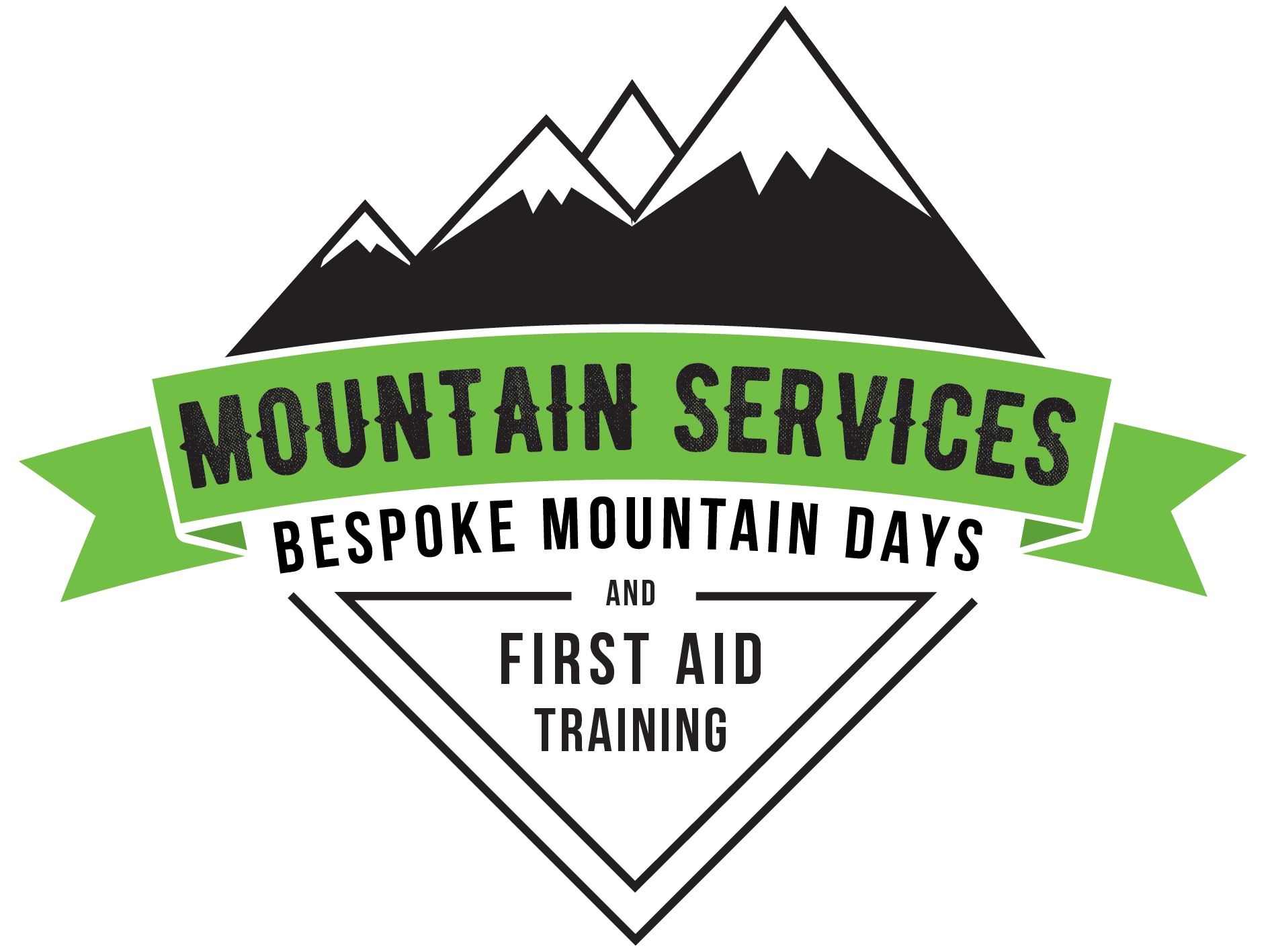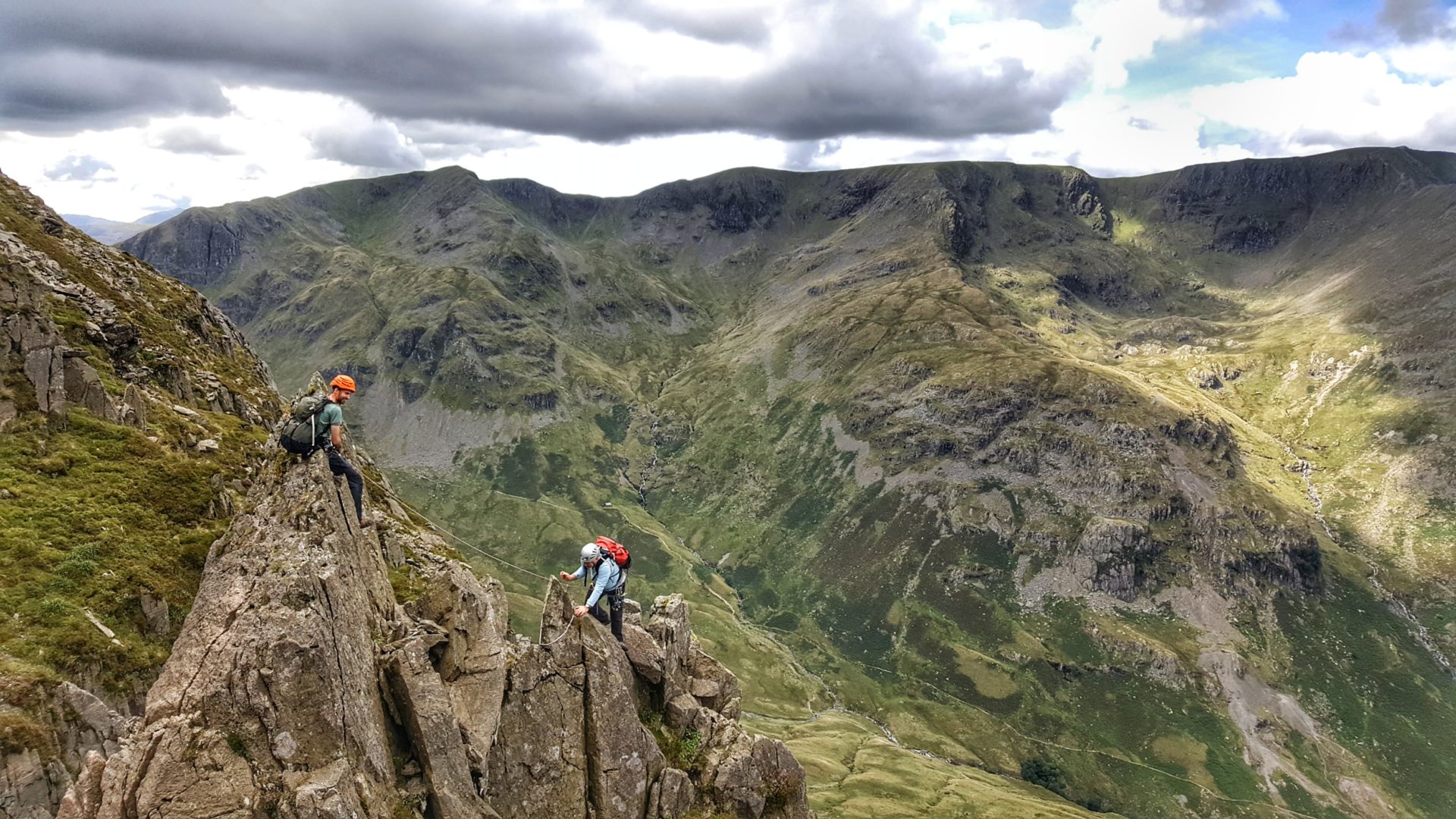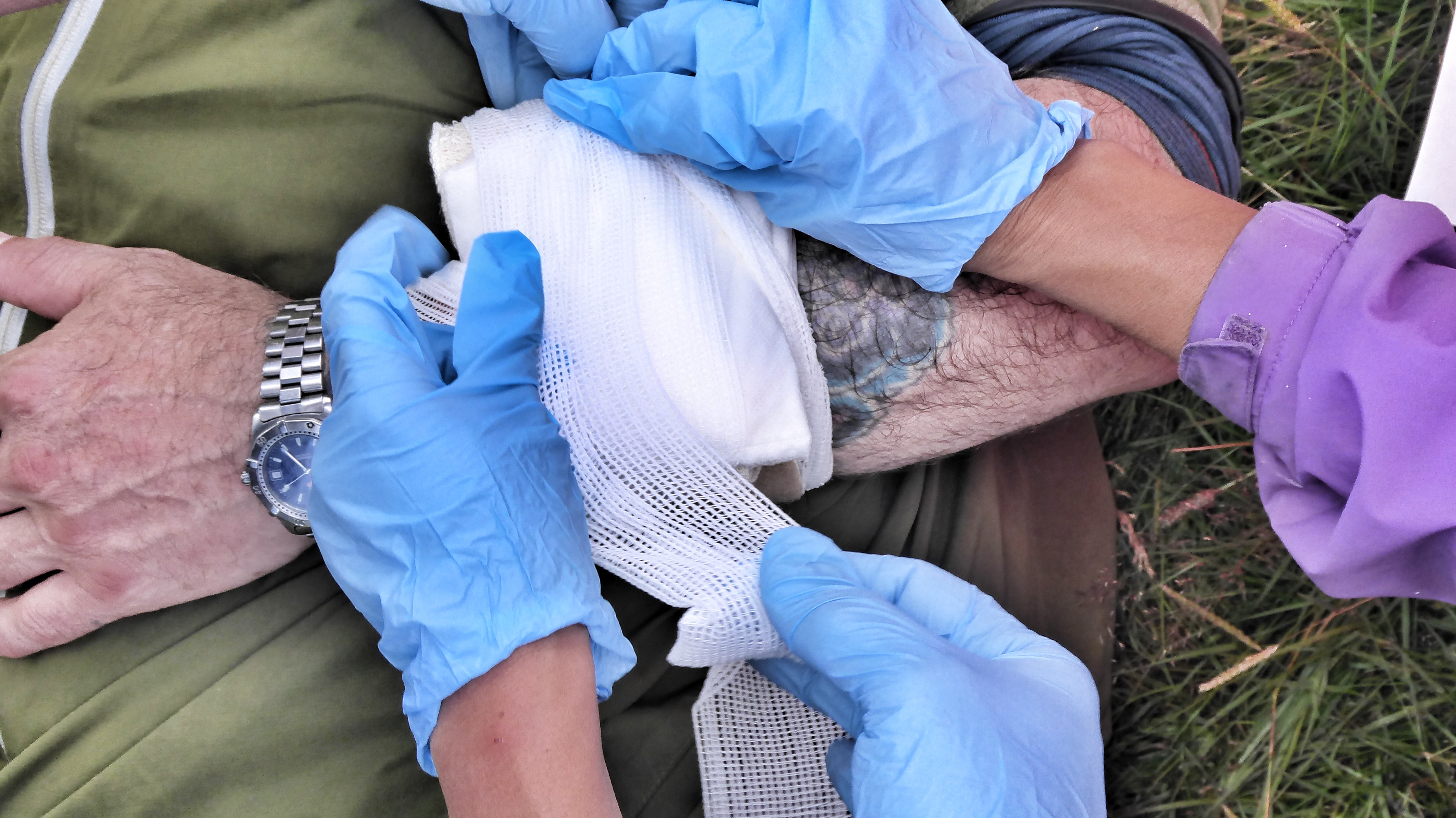- SUpdated 2021
Probably the question that comes up most frequently on outdoor first aid courses is
"so what should be in my first aid kit?"
& you may well be surprised to know there's no specific answer. HSE, first aid providers and manufacturers of pre-packaged kits all have suggestions but there is no specific requirement.
And that is exactly how it should be - there should be an element of making sure what you take is appropriate for the activity, the location, the group members - and your own skillset.
Some things are pretty obvious - you're always going to want some basics - so I 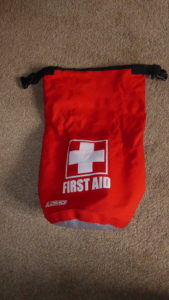 thought I'd share what's always in my personal hill kit. I'll add other items if I feel there's a specific risk to address or if I'm aware of special circumstances - but this is the starting point.
thought I'd share what's always in my personal hill kit. I'll add other items if I feel there's a specific risk to address or if I'm aware of special circumstances - but this is the starting point.
So the very first item is the bag itself - I'm a big fan of this Lomo 5ltr drybag for several reasons:
- It's remarkably robust.
- 5ltrs is a lot - but I can obviously make it smaller.
- It's a drybag! - so it can put up with UK weather easily.
- I can attach it to things.
- It's bright red. This may seem an odd reason - but with more and more first aid kits being green this stands out easily, and that can only be good.
So what goes into the bag:
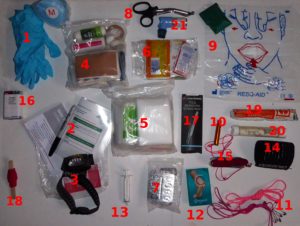
- Gloves - 3 pairs, in a bag to save them getting snagged. A lot of outdoor incidents will involve blood and an unclean environment - your first priority is to keep yourself safe - so gloves are a must. But...they also make it a lot more likely that you're going to be able to get others to help. Avoid latex as some people are allergic to it.
- Basic First Aid leaflet, Casualty Card & Pencil. On the off chance it's me that needs help I like to have a leaflet. For me the casualty card acts as an aide-memoire, but it's also a great way of getting a group or helper involved. Monitoring what's going on and being able to pass that on when help arrives is vital. Everyone on our first aid courses gets a copy of our rather good one.
- A headtorch. If you've read my posts or been on a course you'll know I always have one more torch than I might need. There's a reason - and if I'm getting the first aid kit out I like to know its self sufficient. If I need to move fast the kit might be all I take to a casualty.
- Bag of plasters, tape, wound closure strips, small bandages inc eye bandages. In the outdoors minor cuts and bleeding are one of the most common first aid incidents. I keep everything like this in clear waterproof bags*. Eye bandages come with a small dressing attached and are great for small wounds not just eyes. Wound closure strips work really well - but it's worth having a practice with them as on the hill they can be very fiddly. tip - they really really stick to gloves, learn to apply them with tweezers. *sealable clear bags are also a great way to get rid of and contaminated waste afterwards.
- Bag of big dressings and big bandages including trauma dressings & 2 triangular bandages. For larger wounds. A trauma bandage (covered on our courses) will let you apply a lot more pressure to stop more serious bleeding. Triangular bandages have soooo many uses - including (also included on courses) an improvised tourniquet.
- Bag of sterile wipes, hand warmer, suncream & dioralyte. Wipes for wound cleaning. A hand warmer can offer a lot of comfort. Factor 50 sunscreen and rehydration powder especially useful in high summer & winter conditions.
- Over the counter medicines. Paracetamol, aspirin, ibuprofen, imodium, water purification tablets.
- Small shears. You might wonder if a penknife or multitool is good enough - and it might be - but if you need to cut through heavy clothes or rucksack or buoyancy aid straps then these really are needed.
- Masks.
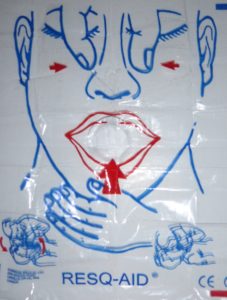 These have always been in our kit - but Covid has made them more relevant than ever - they're now kept with the gloves and are put on before approaching the casualty. The same logic applies as to gloves - you're more likely to get bystander help if you can protect them as well - but if you have a breathing casualty then I'd recommend that you insist of them putting on a mask too. I also still carry the basic plastic face-shields, where trauma is involved there could well be blood involved - a simple face shield can make the difference between being able to give rescue breaths to a casualty or not. And they're so light I couldn't actually weigh it....
These have always been in our kit - but Covid has made them more relevant than ever - they're now kept with the gloves and are put on before approaching the casualty. The same logic applies as to gloves - you're more likely to get bystander help if you can protect them as well - but if you have a breathing casualty then I'd recommend that you insist of them putting on a mask too. I also still carry the basic plastic face-shields, where trauma is involved there could well be blood involved - a simple face shield can make the difference between being able to give rescue breaths to a casualty or not. And they're so light I couldn't actually weigh it.... - Whistle. Small, cheap and highly effective. At 100db and 11g, it's much better than most rucksack types.
- Strong 1mm cord & safety pins. A variety of uses - and very useful for on the trail repairs. I also have a spare boot eyelet attached.
- Blister plasters. I use Compeed, other brands are available- but the better ones also have a mild pain killer in them and are soothing. The difference between a stop on the trail and day over.
- Syringe. For irrigating wounds. If it's me I use my water, if its someone else I try and use theirs - but I always have a water-to-go filter with me (see below)
- Support bandage, velcro self fixing. A good contender for most used piece of kit - so many uses - strapping ankles, wrists, knees - keeping injured parts immobile, applying pressure...
- Multitool. A variety of uses, depends on make/type.
- Smal sealed box; saline solution pods, waterproof matches, safety pins. Matches can sterilise tweezers or pins. Pods for eye wash or small wounds.
- Tick tweezers. Also useful for splinters. tip - I used to have one of those simple looking plastic card removers, then I found they go brittle over time and shatter. So I've reverted to metal. I keep them in the little box they came in as it's labelled & stops the tweezer tips getting damaged which s easy to do.
- Finger splint and small velcro strap. After a summer improvising tiny splints when 3 different customers broke fingers on multi-day treks I now carry a couple of small ice-cream lolly sticks!
- Glowstick. If you've ever had to spend a night on the hill injured, if you have to leave a casualty or group - it's impossible to underestimate the psychological benefit of a small bit of light. It also makes finding the casualty that much easier!
- Glucogel (also known as hypostop). For diabetic, exhausted or hypothermic casualties. Gives a fast acting easy to swallow/absorb sugar boost. I get given these - but nowadays runners gels are a good easily available substitute - just remember you'll need to back it up with carbs!
- Asthma Reliever. Technically this is mine & is a prescribed medicine, but I never use it. Every course raises this dilemma. If someone was having an asthma attack and didn't have an inhaler - would you use it?
What else have you got with you?
It's very rare we'd ever be in the outdoors with nothing else with us; so in reality I'll often have some more first aid items in my kit. Commonly these will include:
- A survival shelter.
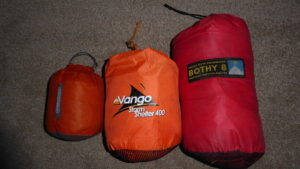 Again it's a risk assessment, but I always carry one appropriate to the day. Small lightweight ones can be found for under 200g now. It's worth knowing the difference between a shelter and a bivi!
Again it's a risk assessment, but I always carry one appropriate to the day. Small lightweight ones can be found for under 200g now. It's worth knowing the difference between a shelter and a bivi! - A rope or sling. I won't have a rope on every day out - but I'm never on the hill without a long sling and a crab - so many uses. We spend a good while covering improvised stretchers on our courses - a shelter or a rope are easy to use.
- A SAM Splint. Or in reality a cheaper alternative. These foam mats with an internal wire frame are easy to mold to a range of shapes to create a splint or a support. I don't use a hydration bladder - so it lives in the internal pouch in my rucksack and usually just adds a bit more comfort for my back.
- Spare warm clothes. - Seems logical - but so so many folk get caught out. All my "bottom of the sack" spares are a size larger than me - so a good large primaloft jacket can simply go over the top of everything. It also acts as great insulation between a casualty and the ground. My "emergency bag" is in the bottom of the sack every day of the year whatever the weather.
- Walking poles. Can make emergency splints - or might just give the walking wounded a bit more support.
- Water-to-go filter bottle. Removes 99.99% of water problems - an easy way to turn a stream or a puddle into drinkable safe water quickly. Whilst water is usually filtered by your sucking action pulling through the filter you can slowly squeeze water through it to irrigate a wound or give a gentle drink.
- Blizzard Bag. I'll more often than not have this in the bottom of the sack on a winter day. A vacuum packed insulated foil emergency sleeping bag - I'm really happy to report that do date I've only ever spent time in one on training days!
And of course...you need to risk assess for the activity you're doing.
- So if I'm working around water or with kids I'll have a pocket mask.
- If I'm far for home or in a higher risk of bleeding environment (jungles, bushcraft etc) I might pack a haemostatic dressing.
As I said at the beginning - there's no right or wrong - but this is where I start from.
